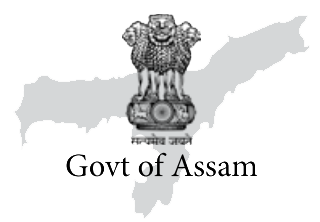World Heritage Sites are cultural and/or natural sites landmarks considered to be of ‘Outstanding Universal Value’, which are inscribed on the World Heritage List by the World Heritage Committee of Unesco after thorough scrutiny and evaluation. These places or buildings are considered to have special importance for everyone beyond the boundary limits of the country in the territorial jurisdiction of which the given site is located.
The World Heritage Convention, adopted by Unesco, that came into force in 1975 sets out the duties of Member States, called State Parties, in identifying potential heritage sites—(i) cultural, (ii) natural and (iii) mixed,within their sovereign territories and their role in protecting and preserving them. By signing the Convention, each country pledges to conserve not only the World Heritage sites situated on its territory, but also to protect its national heritage.
Governments of countries (States Parties) that have ratified the Convention identify and nominate suitable heritage sites to the World Heritage Committee for inscription on the list maintained by Unesco. The nominated heritage sites are required to justify the Outstanding Universal Value based on one or more specified criteria, which are six in number in case of cultural heritage sites, and four in case of natural heritage sites. Acording to the latest Operational Guidelines for the Implementation of the World Heritage Convention 1972 of Unesco (July 2021), one State Party (one country) can only send one nomination per year.
A nominated property is then independently evaluated by two Advisory Bodies mandated by the World Heritage Convention: the International Council on Monuments and Sites (ICOMOS) and the International Union for Conservation of Nature (IUCN), which respectively provide the World Heritage Committee with evaluations of the cultural heritage and natural heritage site respectively.
For India, Archaeological Survey of India is the nodal agency to forward all nomination dossiers to Unesco for evaluation.
History:
Moidams (or Maidams) represent the late mediaeval (13th–19th century CE) mound-burial tradition of the Tai Ahoms in Assam, a tradition that continued for 600 years until the end of the Ahom rule which had begun in 1228. Out of 386 Moidams explored so far throughout the State, 90 royal burials at Charaideo are the best preserved, representative, and most complete examples of this tradition, and hence lay claim to World Heritage status.
In brief, the Charaideo Moidams enshrine the mortal remains of Ahom royalty—previously, those of the deceased with their paraphernalia were buried, but after the 18th century, the Ahom rulers adopted the Hindu method of cremation, later entombing the cremated bones and ashes in a Moidam at Charaideo. The Ahoms venerate Moidams believing that one part of the deceased’s spirit has eternally resided in the Moidam that ensures the State’s well-being. Symbolising unique cultural ethos, this heritage site represents the technical genius of the creators who transformed and alleviated a natural landscape into the “Ahom Heaven” as also “Ancestral Spirit Forest”. The Charaideo heritage site is one of aspirants and contenders under the cultural heritage category in the current year cycle—it adds a new burial typology to the list of World Heritage Sites.
The physical transformation of the scenic natural landscape into a dramatic sacred geography was achieved by clustering burial mounds of varied sizes, that were sited ceremonially. Moidams are mounds created by providing an earth-cover (or ‘Ga-Moidam’) over a hollow vault (‘Tak’) constructed with bricks and stone or earth. The hollow cavity within the ‘Tak’ contained a ‘Garvha’ or the burial pit where embalmed bodies or cremated remains (ashes) of Kings and Royals were laid to rest.
The Buffer Zone measuring 754.511 hectare comprises representative component parts associated with funerary rituals, other Moidams and archaeological remains of the first Ahom Capital city and settlements continuing traditional management demonstrating the ‘Ahom-way of life’.
Within the Buffer Zone lies archaeological remains of associated with the funerary traditions like ritual ponds (Sha –Dhuwa Pukhuri and Petu- Dhuwa Pukhuri), ceremonial pathways (Dhodhur Ali and Sha- Niya Ali), other Moidams, fragments of the first capital at Charaideo and twin hills with remains of Deo- shal and Lang kuri Doul (Gota Dole) on the low hill, south of Deo – shal – the sacred core of Tai Ahoms. These remains are set amidst a rural landscape where the customary way of life and traditions characteristic to Tai-Ahom culture continues till date.
Out of a total of 1,154 World Heritage Sites (called properties) across the globe in 167 signatory countries, there are 40 in India, including Kaziranga National Park and Manas Wildlife Sanctuary. There is currently no World Heritage Site in the category of cultural heritage in North East India. The current nomination dossier on the Royal Ahom Moidams at Charaideo in Assam is an attempt to fill this gap.
In doing so, the State honours the spirit and aspirations of the people of Assam, which owes Ahom kings their exceptional contribution in lay foundations of modern Assam society. The Ahom kings will always be remembered in the history of Assam for integrating divided peoples and regions of the Brahmaputra valley, unifying them in one single thread of modern vibrant Assamese commonality, diversity, and identity.
— Dr. KC Nauriyal is a former Director of Archaeological Survey of India; Dr. DR Kouli is Director, Directorate of Archaeology, Govt of Assam; Ms Simran Sambhi is an Exploration Officer, Directorate of Archaeology, Govt of Assam













